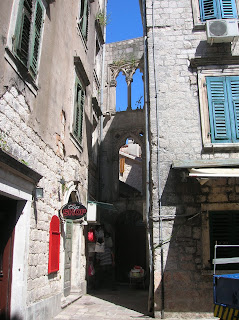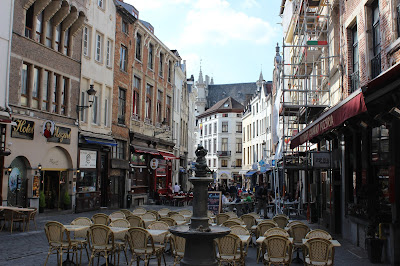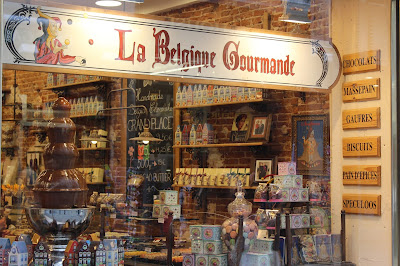Like many parts of China its probably changed
fast and become almost unrecognisable from what it was. And what is was, was great, a total contrast
to the manic cities of Beijing and Shanghai an unexpected discovery on China's
east coast. I'm not going to lie, we
headed for Qingdao for one reason and that one reason was the beer. Of course it was a bonus that the very city
that produced this tasty beverage was near the first sign of a beach / resort
city that we had seen in the year we had spent in China.
The second thing that really stood out was the awesome fact that in this city if you fancy a beer you can leave your hotel room, pop down to the street and some man with a keg will fill up a plastic carrier bag for you to take away. Awesome, a little impractical, but still a definite must do whilst here. No better way to sample Qingdao than in Qingdao.
As we ate that night on the pier we tucked in to a variety of unidentifiable sea-life and of course a refreshing pint whilst we chatted to some locals. This is definitely one place in China that would be worth a second visit. I just hope with rapid modernisation and hosting major events like sailing regattas it won't have lost its very charm and quirkiness that made it so unique in China.
Exiting the train at 6.30am we were preparing to
run the gauntlet of hotel touts and find our own place to stay. Our resolve lasted at least 30 seconds,
before we were approached by a man offering a brand new hotel for the bargain
price of 40 Yuan. Always one for a bargain,
plus the fact that when pointed out, it was straight opposite and we had heavy
bags were all compelling reasons to sign up.
The outside look sparkly the inside didn't. In fact it wasn't even finished, still even
builders in China should be able to make a little on the side and the double
room complete with its own bathroom was quickly made up with clean sheets and
bleach poured down the toilet that was so close to the wall that it was only
possible to use if a straddle or sideways approach was adopted. Perfect what more could we want.
We dumped our stuff and set off exploring. It's possible to walk along the top of the
cliff top for quite away. We stopped
several times to check out what was on offer.
Walking over the jetty we stopped to watch local fisherman trying their
luck hoping to sell some of their catch to one of the many seafood restaurants
on offer in this city, or if not, at least to the market stalls that popped up
in an evening on the pier offering tasty treats at a more affordable price for
the locals, and those on a limited budget like ourselves.
A little weirdly there is also a German mansion
house that you can go see, left over from the colonial occupation at the
beginning of the last century and also a cathedral that strangely appeared in
the middle of a Chinese neighbourhood and some of the smaller shopping streets
around. And of course there is the beach
which appeared clean enough to swim or paddle.
The second thing that really stood out was the awesome fact that in this city if you fancy a beer you can leave your hotel room, pop down to the street and some man with a keg will fill up a plastic carrier bag for you to take away. Awesome, a little impractical, but still a definite must do whilst here. No better way to sample Qingdao than in Qingdao.
As we ate that night on the pier we tucked in to a variety of unidentifiable sea-life and of course a refreshing pint whilst we chatted to some locals. This is definitely one place in China that would be worth a second visit. I just hope with rapid modernisation and hosting major events like sailing regattas it won't have lost its very charm and quirkiness that made it so unique in China.

























